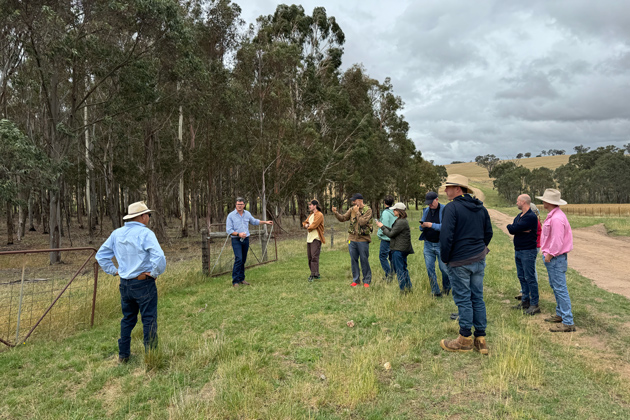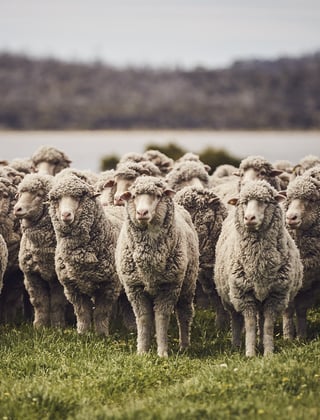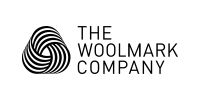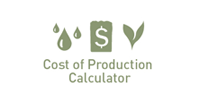Woolmark+ connecting brands and growers

Australian woolgrowers and fashion brands can work hand in hand when it comes to promoting the benefits of our premium natural fibre. That’s the view of Graham Tabor from American brand Thom Browne who was one of the delegates on the Woolmark+ Fellowship tour.
Based in New York, Graham Tabor is Head of Knitwear and Strategic Advisor for Sustainable Supply Chain Solutions at Thom Browne, a brand of Zegna Group.
“About 95% of Thom Browne products are made from natural fibres. A big focus of what I do is explore what it means to create a nature-positive material and how to connect brands and growers more in the supply chain,” Graham explained in a recent episode of AWI’s The Yarn podcast.
“It has been a deep pleasure for me to come and visit the growers in Australia. Being on farm and actually going into the field and having the growers show me and be excited about how natural vegetation has come back, about remnant pastures that they've been protecting, about wetlands that have been restored. For me, it's been extremely inspiring.”
It’s a long way from the sheep to the shop floor, conceptually and physically, and brands can often feel as remote from growers as growers feel remote from brands.
“When looking to source responsibly produced fibre, the problem that brands often face is that they are very disconnected from the farm because there are so many layers of traders and brokers in-between. Unless the brand has some direct grower relationships, it’s very difficult to know what’s happening on the ground on farms, what’s working and what’s possible, and what the goals of the farmer are. Similarly, it’s very difficult to get demand signals, of what’s important for brands and their final customer, back to the grower,” Graham said.
“At Thom Browne, we have supply chains where we source directly from big farms so we have that traceability. But smaller, mid-sized farms don’t have the scale to have that kind of direct traceability because the brokerage system aggregates the wool from smaller growers into the large-sized batches that scouring plants require. Unfortunately, this means that all the great work that a grower might be doing on, say, biodiversity isn’t conveyed along the supply chain.”
However, insetting programs are a way that brands and growers can work collaboratively. In contrast to carbon offsetting, which involves a brand balancing out its greenhouse gas (GHG) emissions by investing in projects that reduce GHG emissions in other industries, carbon insetting focuses on reducing GHG emissions within the brand’s own supply chain.
“So if a grower is doing these incredible environmental things that we as a brand want to support, we can give an ecosystem premium directly to the grower that is separate from the cost of the wool and separate from the broker system. It’s an additional income stream for the grower,” Graham said.
“The definition of insetting is that it has to be within your own supply chain. So a brand’s wool scourer or spinner or, in this case, the woolgrower, has to be undertaking emissions reductions or removals on farm for the brand to be able to report it within their scope 3 reporting.
“For a brand, because the vast majority of impacts are embedded in our product, we have to be engaging with our supply chain if we want to reduce our impact.”
For broader environmental reporting by brands, it is about more than climate and carbon.
“It could be a lot of things that a farmer is doing. It could be rebuilding river banks, making wetlands more diverse and more resilient; it could be fencing off biodiverse areas; it could be supporting grazing in a way that remnant vegetation is maintained. There's a lot of different ways that it could manifest.
“Global frameworks like the Taskforce on Nature-related Financial Disclosures are basically trying to create an accounting system for nature through which companies report on their impacts on nature, in the same way they currently have to report on their financial health.
“If you have to report on your impacts on nature, then there’s a reason for you to really invest in reducing that impact. And if you’re a natural fibre fashion brand, a lot of your impacts are at the farms you work with, so you have to know your farmers and start engaging with them.
“We need to look at ways to bring us together and to reward growers for doing their incredible environmental work and to embed that in business.”
Graham says it’s also important to explore ways to connect consumers with the on-farm experience.
“If we can somehow connect people emotionally to what it means to be on these lands, and the woolgrowers’ passion for the place, and the actual ecosystems, then that is extremely powerful. I think we change people not through the mind but through the heart,” he said.
More information: Hear more from Graham Tabor in Episode 268 of AWI’s The Yarn podcast at www.wool.com/podcast
This article appeared in the Autumn 2025 edition of AWI’s Beyond the Bale magazine that was published in March 2025. Reproduction of the article is encouraged.














